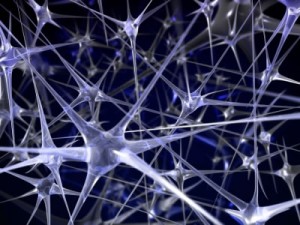A lack of specific brain receptors has been linked with schizophrenia in new research by scientists at Newcastle University.
In work published today in the Proceedings of the National Academy of Sciences, the team has found that NMDA receptors are essential in modifying brain oscillations – electrical wave patterns – which are altered in patients with schizophrenia.
They now want to investigate whether optimising the function of the receptors, which are already know to be involved in making memories, could lead to a new way of treating the mental illness.
Schizophrenia is one of the most common serious mental health conditions in the UK and can cause a range of different psychological symptoms, including hallucinations and delusions. One in 100 people will experience at least one episode of acute schizophrenia during their lifetime and it affects men and women equally. While its exact cause is unknown, most experts believe that the condition is caused by a combination of genetic and environmental factors.
Dr Mark Cunningham, who led the research at Newcastle University, UK, says: “We have shown that by selectively targeting receptors we can modify the dynamics of the brain. Our hope would be that in the long term this could lead to a method for actually improving brain function, not only for people with schizophrenia but potentially for many other brain conditions.
“We intend to continue looking in more detail at brain receptors so we can build on our understanding of how the brain works. This could open a new route for the design of drugs and a better understanding of how existing drugs work.”
The brain is capable of producing different types of cortical oscillations. The Newcastle University team has identified a difference in one particular type – termed a gamma frequency oscillation – which has previously been shown to be altered in schizophrenia patients.
They examined the function of individual brain neurons in rats and applied ketamine, a drug which mimics many of the symptoms of schizophrenia in humans and animals and which is also a common recreational drug. They found that ketamine modified the frequency of cortical oscillations associated with normal brain function by blocking NMDA receptors.
NMDA receptors are already known to be involved in making memories. This new research demonstrates that the function of NMDA receptors on one particular type of brain cell, an inhibitory interneuron, is critically important for modifying the oscillation rate of the brain.
The Newcastle team believes that the disrupted patterns of oscillations seen in patients suffering from schizophrenia may be either due to this inhibitory brain neuron having a lack of NMDA receptors or that the NMDA receptors on this neuron are not functioning fully. As a result of this research, scientists have a whole new area to explore in the treatment of schizophrenia.
Source:Newcatle University via Eureka: Academic paper: NMDA Receptor-Dependent Switching Between Different Gamma Rhythm-Generating Microcircuits in Entorhinal Cortex. Steven Middleton, Jozsi Jalics,, Tilman Kispersky, Fiona E.N. LeBeau, Anita K.Roopun, Nancy Kopell, Miles A. Whittington & Mark O. Cunningham
Published in: Proceedings of the National Academy of Sciences (PNAS): BIOLOGICAL SCIENCES: Neuroscience
Funded by: The Royal Society, The Wellcome Trust, MRC, National Science Foundation, NIH.

